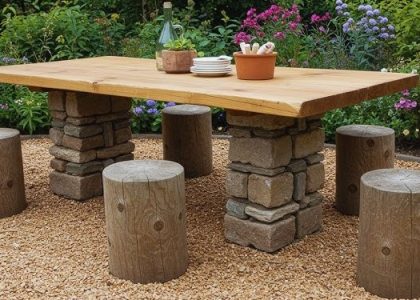
Rock Stars: Using Large Rocks in Landscaping is a comprehensive guide that explores the innovative use of large rocks in the field of landscaping. It delves into the aesthetic and functional aspects of incorporating these natural elements into various outdoor spaces. From creating dramatic focal points to establishing sturdy, erosion-preventing structures, large rocks prove to be versatile and visually striking additions to gardens, parks, and other landscapes. This guide provides insights into selecting the right rocks, positioning them effectively, and harmonizing them with other elements of the landscape. It showcases how these seemingly mundane objects can transform into rock stars of landscaping, providing both beauty and utility in outdoor design.
Incorporating Large Rocks into Your Landscape: A Guide for Rock Stars of Gardening
Rock Stars: Using Large Rocks in Landscaping
In the world of landscaping, large rocks are the unsung heroes. They provide a natural, rugged beauty to any outdoor space and serve as a durable, low-maintenance option for those looking to enhance their garden’s aesthetic appeal. Incorporating large rocks into your landscape design can transform your garden into a stunning, unique outdoor space. This article will guide you on how to become a rock star of gardening by effectively using large rocks in your landscaping.
Large rocks, often referred to as boulders, can serve multiple purposes in a garden. They can act as focal points, drawing the eye and adding interest to an otherwise flat landscape. Strategically placed, they can also provide a sense of scale and proportion, making your garden appear larger and more balanced. Furthermore, they can be used to create natural-looking boundaries or to delineate different areas within your garden.
Before you start incorporating large rocks into your landscape, it’s essential to consider the overall design of your garden. The rocks should complement the existing elements and not look out of place. For instance, if your garden has a rustic, woodland theme, you might opt for moss-covered boulders. On the other hand, if your garden has a sleek, modern design, smooth, dark rocks might be a better fit.
Once you’ve chosen the right rocks for your garden, the next step is placement. This can be a bit tricky, as large rocks are heavy and difficult to move. It’s advisable to work with a professional landscaper who has the necessary equipment and expertise. However, if you’re a DIY enthusiast, you can rent a skid steer or a similar piece of machinery to help with the heavy lifting.
When placing the rocks, remember that they should look as natural as possible. This means they should be partially buried, with the broader side facing outwards. Also, consider grouping rocks in odd numbers, as this tends to look more natural than even-numbered groupings.
Large rocks can also be used to solve common landscaping problems. For example, if your garden has a steep slope, you can use rocks to create terraces, reducing soil erosion and creating flat areas for planting. Similarly, if your garden has poor drainage, rocks can be used to create a dry creek bed, directing water away from your home and plants.
In addition to their aesthetic and functional benefits, large rocks are also environmentally friendly. They don’t require watering, fertilizing, or pruning, making them a sustainable choice for eco-conscious gardeners. Plus, they provide habitat for a variety of creatures, from lizards to birds, enhancing your garden’s biodiversity.
In conclusion, incorporating large rocks into your landscape can significantly enhance your garden’s aesthetic appeal and functionality. Whether you’re looking to create a focal point, solve a landscaping problem, or simply add a touch of rugged beauty to your outdoor space, large rocks are a fantastic option. So why not unleash your inner rock star and start exploring the many possibilities that these natural wonders offer? With a bit of creativity and planning, you can transform your garden into a stunning, rock-inspired masterpiece.




